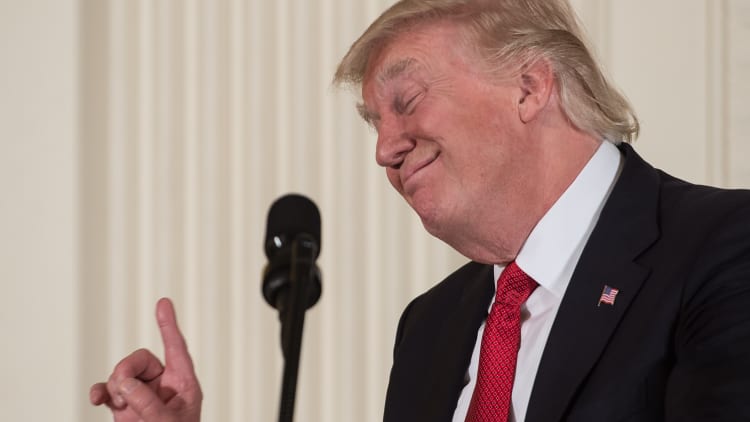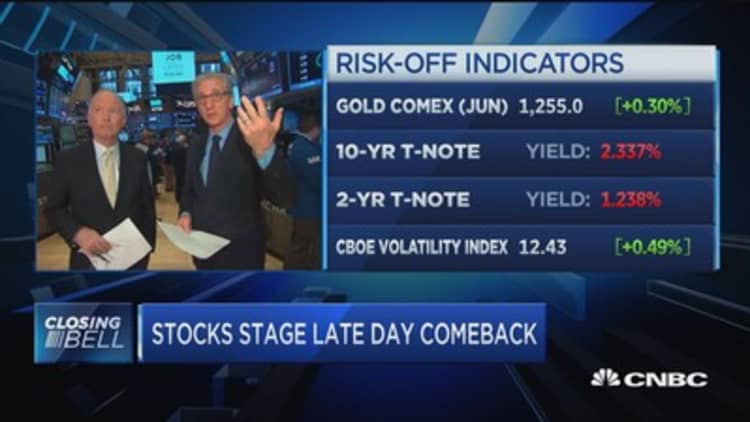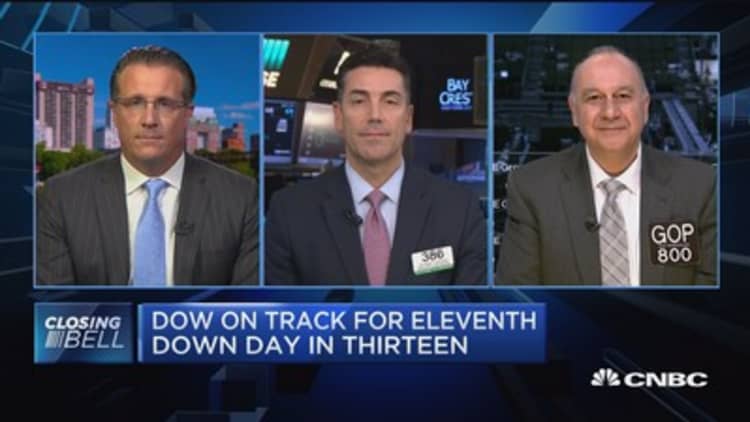
The bullish beginning of 2017 did more than set a sizzling pace for the year — it actually pulled some long-dormant cash off the sidelines.
As the S&P 500 gained 4.7 percent, and bonds managed to stay above water, investors yanked about $75 billion out of low-yielding money market accounts and put it to work, according to data from the Investment Company Institute and TrimTabs. The total represented about 2.7 percent of all assets.
That money accounted for a sizable chunk of the $162 billion that flowed to both stocks and bond funds during the quarter, TrimTabs said.
The money market total is through February, the most recent data available from the ICI.
Though bonds barely moved during the quarter, the sector received the greater portion of that money. Fixed income ETFs pulled in just more than $100 billion, the highest level in four years. Global stock fund inflows, meanwhile, totaled $39.8 billion, the most since the second quarter of 2015. The rest of the inflows were scattered among other categories.
If the current trends hold through the year, it would show a marked reversal in trend. Money markets are a traditional safe haven for investors, so outflows often signal a willingness to take risk.
The last time investors pulled that much cash off the sidelines in the first two months of the year was in 2010, when money markets saw outflows of more than $180 billion in January and February. That was in the early stages of the current eight-year bull market run, the second longest in history. For all of 2010, money markets saw $525.1 billion in outflows. In 2016, outflows were just $29.6 billion.
The question is what it all means.
Firmly in 'neutral'
On one level, the rush of cash can be linked directly to the rising market. On another, it could feed worries that the bull market is entering its late stages.
However, with $2.65 trillion still in money market funds, there would have to be a lot more evidence before cash flows could point to a market top.
"It's just the beginning of money coming in," said Keith Springer, president of Springer Financial Advisory. "That's a large inflow, but certainly not to the point of alarm. I would want to see that for five or six quarters in a row before I would get worried."
Indeed, the cash rush has come even as investor sentiment has cooled from multidecade highs earlier in the year.

Bank of America Merrill Lynch measures the average equity allocations from Wall Street portfolio managers, and the current reading is at 52.9. That's considered "neutral" territory and is around the same level as the March 2009 lows that preceded the bull rally.
Historically speaking, a reading at that level would point to a median gain of 22 percent for the S&P 500 with a 94 percent chance of a positive move, according to the bank. However, BofAML forecasts the index will be at 2,450, about a 3.7 percent gain from Friday's close.
The market's been in flux lately, with the little changed over the past month as investors have worried that President Donald Trump will struggle to get his pro-growth agenda approved this year.
Art Hogan, chief market strategist at Wunderlich Securities, thinks it won't matter very much. Investors are starting to believe that the economy will grow with or without Trump's help, he said.
"Around the election last year there was a lot of trepidation about this market, that the market was going to take a pause, and that never happened," Hogan said. "There's a growing belief that it's fundamental versus agenda-driven. What's driving the market is certainly nothing that the White House has done."
Watch: Market perception vs. reality



